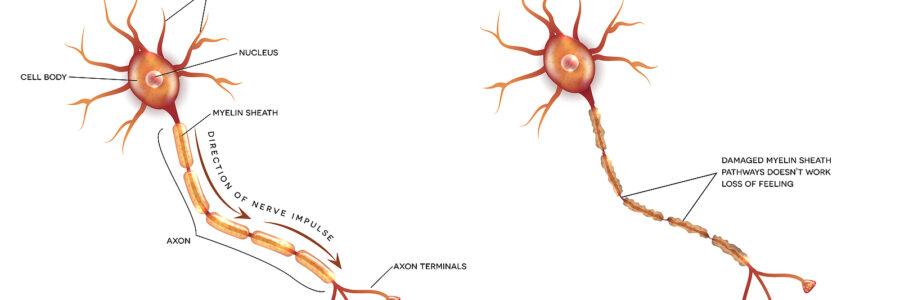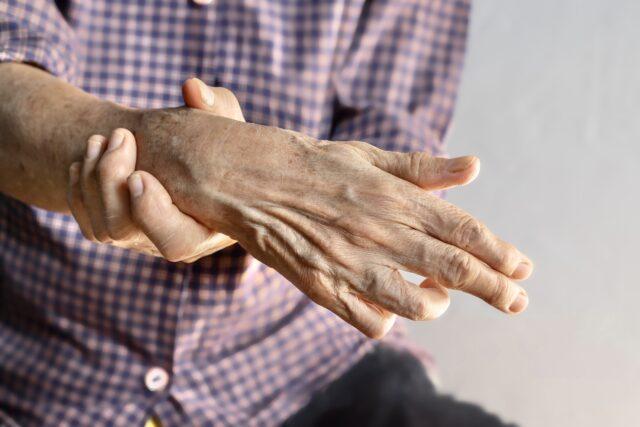 Understanding Massage and Its Impact on Nerve Damage:
Understanding Massage and Its Impact on Nerve Damage:
Massage therapy has long been revered for its myriad benefits, from relieving muscle tension to promoting relaxation and enhancing overall well-being. One area of particular interest is its potential impact on nerve damage. While the benefits of massage for muscle-related issues are well-documented, its effects on nerve damage require a more nuanced understanding. In this comprehensive guide, we’ll delve into the relationship between massage and nerve damage, exploring how different massage techniques can aid in nerve repair and provide relief from nerve pain.
Understanding Nerve Damage
Nerve damage, or neuropathy, can occur due to various reasons, including physical trauma, medical conditions like diabetes, infections, and exposure to toxins. Symptoms of nerve damage can range from mild tingling and numbness to severe pain and muscle weakness. Depending on the severity and cause, nerve damage can significantly impact a person’s quality of life.
How Massage Therapy Works
Massage therapy involves the manipulation of soft tissues, including muscles, tendons, and ligaments, to promote relaxation, reduce pain, and enhance overall body function. The primary mechanisms through which massage therapy exerts its effects include:
Improved Circulation: Massage enhances blood flow to the targeted areas, which can promote healing by delivering essential nutrients and oxygen to damaged tissues.
Pain Relief: Through the stimulation of sensory receptors, massage can help reduce pain by blocking pain signals to the brain.
Muscle Relaxation: By alleviating muscle tension and reducing stiffness, massage can improve mobility and decrease discomfort.
Stress Reduction: Massage promotes relaxation and reduces stress levels, which can have a positive impact on overall health and well-being.
Types of Massage Techniques
Several massage techniques can be beneficial for individuals with nerve damage. Understanding the unique characteristics of each technique can help in choosing the most appropriate therapy:
Swedish Massage: This technique involves long, gliding strokes, kneading, and circular movements. It is effective for promoting overall relaxation and improving circulation, which can be beneficial for mild nerve pain.
Deep Tissue Massage: This type focuses on deeper layers of muscle and connective tissue. It can be particularly useful for chronic pain and tension resulting from nerve damage, as it helps release deeply held tension.
Neuromuscular Therapy (NMT): Also known as trigger point therapy, NMT targets specific points of pain in the muscles, which can correspond to nerve pain. By applying pressure to these trigger points, NMT can help release tension and reduce referred pain.
Myofascial Release: This technique targets the fascia, the connective tissue surrounding muscles and nerves. By applying sustained pressure, myofascial release can help alleviate restrictions in the fascia, reducing pain and improving mobility.
Reflexology: Focusing on pressure points in the feet, hands, and ears, reflexology can stimulate nerve pathways and promote relaxation throughout the body. This can be particularly beneficial for systemic nerve conditions like peripheral neuropathy.
Massage Therapy for Specific Nerve Conditions
Different types of nerve damage may respond to massage therapy in various ways. Here are a few common conditions and how massage can help:
Carpal Tunnel Syndrome: Characterized by numbness and tingling in the hands and fingers, carpal tunnel syndrome can benefit from deep tissue massage and myofascial release to alleviate pressure on the median nerve.
Sciatica: This condition involves pain radiating along the sciatic nerve, often affecting the lower back and legs. Neuromuscular therapy and deep tissue massage can help relieve muscle tension and reduce nerve compression.
Diabetic Neuropathy: Nerve damage resulting from diabetes can cause pain and numbness in the extremities. Reflexology and gentle Swedish massage can improve circulation and provide symptomatic relief.
Post-Surgical Nerve Damage: After surgery, nerve damage can occur due to trauma or inflammation. A combination of techniques, including Swedish massage and myofascial release, can aid in the healing process and reduce scar tissue formation.
Considerations and Precautions
While massage therapy can offer significant benefits for individuals with nerve damage, it is essential to approach it with caution. Here are some important considerations:
Consultation with Healthcare Providers: Before starting massage therapy, individuals with nerve damage should consult with their healthcare providers to ensure it is safe and appropriate for their specific condition.
Qualified Massage Therapists: It is crucial to seek massage therapists who are trained and experienced in dealing with nerve-related issues. A qualified therapist can tailor the treatment to the individual’s needs and avoid exacerbating the condition.
Communication: Open communication with the massage therapist is vital. Individuals should inform their therapists about their symptoms, pain levels, and any changes in their condition to ensure the treatment is effective and safe.
Gradual Approach: Starting with gentle techniques and gradually increasing intensity can help the body adapt to the therapy and prevent any adverse reactions.
Conclusion
Massage therapy offers a promising complementary approach for managing nerve damage. By improving circulation, reducing pain, and promoting relaxation, various massage techniques can aid in the recovery process and enhance the quality of life for individuals with nerve-related conditions. However, it is essential to approach massage therapy with careful consideration and professional guidance to ensure safety and efficacy. With the right approach, massage can be a valuable tool in the journey towards nerve health and overall well-being.
For more information about how massage can benefit nerve damage contact our local massage therapy school campus.

The Healing Power of Touch
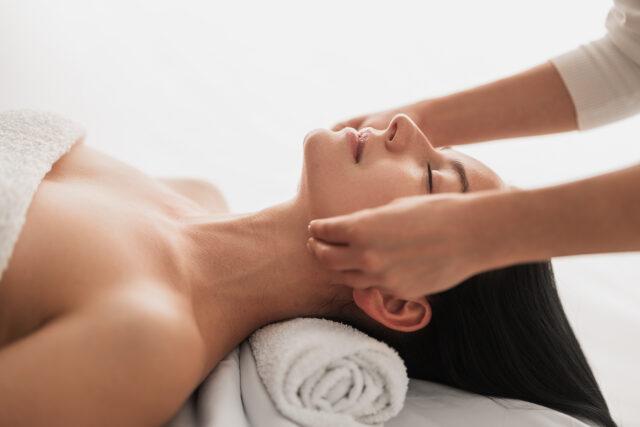 The Healing Power of Touch – Touch is a fundamental aspect of human existence. From the gentle embrace of a loved one to the soothing sensation of a massage therapist’s skilled hands, touch plays a pivotal role in our lives. Beyond the emotional and sensory experiences, touch has a profound impact on our overall health and well-being. In this blog post, we will delve into the importance and effects of touch on our physical, mental, and emotional health.
The Healing Power of Touch – Touch is a fundamental aspect of human existence. From the gentle embrace of a loved one to the soothing sensation of a massage therapist’s skilled hands, touch plays a pivotal role in our lives. Beyond the emotional and sensory experiences, touch has a profound impact on our overall health and well-being. In this blog post, we will delve into the importance and effects of touch on our physical, mental, and emotional health.
The Science of Touch
To understand the significance of touch, it’s essential to explore the science behind it. Our skin is our body’s largest organ, densely populated with millions of sensory receptors that transmit information to the brain. These receptors come in various forms, each specializing in a specific type of touch sensation. For instance, there are receptors for pressure, temperature, pain, and gentle caresses.
When we experience touch, these receptors send signals to the brain, which processes them in the somatosensory cortex. This intricate network of nerve cells helps us interpret and respond to touch in various ways. This scientific foundation demonstrates that touch is not just a pleasurable experience but a critical element of our physiological and psychological health.
The Healing Power of Touch
Stress Reduction
One of the most well-documented effects of touch is its ability to reduce stress. When we are touched in a comforting or reassuring manner, our bodies release oxytocin, often referred to as the “love hormone” or “cuddle chemical.” Oxytocin promotes feelings of trust, bonding, and relaxation, counteracting the stress hormone cortisol.
Pain Management
Touch therapy, such as massage, acupuncture, and acupressure, has long been used to alleviate physical pain. These therapies stimulate the release of endorphins, natural painkillers produced by the body. Additionally, they improve blood circulation, which can reduce inflammation and promote healing.
Immune System Support
Research has shown that regular, positive touch can enhance the immune system’s functioning. The stress-reducing effects of touch, coupled with the release of immune-boosting hormones, can lead to improved resistance to illness.
Mental Health Benefits
The effects of touch extend to mental health as well. Touch has been linked to increased feelings of self-worth and reduced symptoms of anxiety and depression. Physical touch can provide a sense of comfort and connection, reducing feelings of loneliness and isolation, which are common contributors to mental health issues.
Improved Sleep
For those struggling with sleep disorders, touch can be a natural remedy. Gentle, soothing touches release melatonin, the hormone responsible for regulating sleep patterns. This can lead to better sleep quality and an increased overall sense of well-being.
Enhanced Bonding and Relationships
Touch is a primary means of communication and bonding in human relationships. Whether it’s a hug, a handshake, or a loving pat on the back, physical touch fosters a sense of trust and connection between individuals. In romantic relationships, regular physical touch has been associated with increased relationship satisfaction and longevity.
Emotional Regulation
When we are touched, especially in a loving and supportive manner, it has a remarkable effect on our emotional state. Touch can help calm heightened emotions, soothe anxiety, and offer a sense of security during times of distress.
Cultural and Individual Differences
It’s important to note that the significance of touch can vary across cultures and individuals. Cultural norms, personal boundaries, and past experiences all influence how people perceive and respond to touch. While some cultures may encourage more physical contact as a form of social bonding, others may have stricter boundaries around touch. It’s essential to respect these differences and always obtain consent when engaging in physical contact.
Practical Ways to Incorporate Healthy Touch
Hugging: Embrace loved ones with genuine hugs to release oxytocin and strengthen emotional bonds.
Massage Therapy: Consider regular massages to reduce stress, alleviate physical discomfort, and promote relaxation.
Cuddle Time: Spend quality time cuddling with your partner, children, or pets to foster connection and emotional well-being.
Self-Care: Don’t forget self-touch. Self-massage, taking relaxing baths, or practicing self-hugging can be comforting and beneficial.
Mindful Touch: Engage in mindfulness practices that involve touch, such as yoga or tai chi, to connect with your body and reduce stress.
Social Connections: Maintain strong social connections with friends and family to ensure regular opportunities for positive touch.
Conclusion
In a fast-paced, digitally connected world, the importance of touch on overall health cannot be overstated. It is a powerful tool for reducing stress, managing pain, supporting the immune system, and enhancing emotional well-being. From the cradle to the nursing home, humans have an innate need for physical touch, and acknowledging and prioritizing this need can lead to a happier, healthier life.
As we navigate the challenges of modern life, let us remember the profound effects of touch and make a conscious effort to incorporate it into our daily routines. By doing so, we can nurture our physical, mental, and emotional well-being and experience the healing power of touch to its fullest extent.

Workplace Massage: Boosting Productivity and Employee Satisfaction
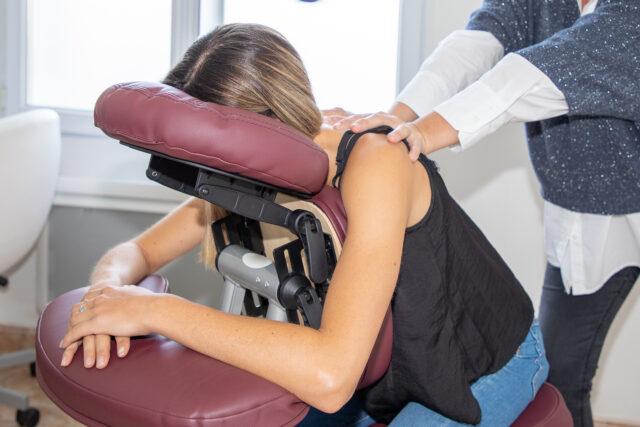 In today’s fast-paced work environments, employee well-being has become a top priority for organizations aiming to create a positive and productive workplace culture. One increasingly popular method to promote workplace wellness is through massage therapy. In this blog post, we will explore how incorporating massage into the workplace can lead to happier, healthier, and more engaged employees.
In today’s fast-paced work environments, employee well-being has become a top priority for organizations aiming to create a positive and productive workplace culture. One increasingly popular method to promote workplace wellness is through massage therapy. In this blog post, we will explore how incorporating massage into the workplace can lead to happier, healthier, and more engaged employees.
- The Impact of Workplace Stress: Workplace stress is a pervasive issue that can negatively affect employees’ mental and physical well-being. High stress levels lead to decreased productivity, increased absenteeism, and a higher risk of burnout. By offering massage as a workplace wellness program, employers can provide employees with a valuable stress management tool.
- Benefits of Workplace Massage: a. Stress Reduction: Massage helps to alleviate stress by reducing cortisol levels and promoting the release of endorphins, the body’s natural feel-good hormones. Regular massage sessions can help employees manage stress more effectively and maintain a sense of calm and balance throughout the workday. b. Pain Relief: Many employees suffer from musculoskeletal issues and chronic pain due to prolonged sitting, repetitive tasks, or poor posture. Massage therapy can target these specific areas, relieving tension, improving circulation, and reducing pain. c. Improved Focus and Mental Clarity: Massage promotes relaxation and mental clarity, which can enhance cognitive function and concentration. Employees who receive regular massages are more likely to stay focused, make better decisions, and perform at their best. d. Enhanced Mood and Morale: Massage triggers the release of serotonin and dopamine, neurotransmitters associated with happiness and positive mood. By incorporating massage into the workplace, employers can create an atmosphere of well-being, boosting employee morale and job satisfaction.
- Different Approaches to Workplace Massage: a. On-Site Chair Massage: Chair massage is a convenient and efficient option for the workplace. It involves a brief, seated massage that focuses on the neck, shoulders, back, arms, and hands. On-site chair massage sessions typically last between 10 to 30 minutes and can be scheduled during breaks or as part of wellness events. b. Wellness Rooms: Creating dedicated wellness rooms within the workplace provides employees with a quiet, comfortable space where they can receive longer massage sessions or engage in relaxation exercises. These rooms can be equipped with massage tables, relaxing music, and essential oils to enhance the overall experience. c. Wellness Programs and Subsidies: Employers can partner with local massage therapists or wellness centers to offer discounted or subsidized massage sessions for employees. By providing financial incentives or flexible schedules to accommodate massage appointments, employers demonstrate their commitment to employee well-being.
- Implementing a Workplace Massage Program: a. Management Buy-In: To successfully introduce a workplace massage program, it’s crucial to obtain support from management and stakeholders. Highlight the potential benefits, present case studies, and emphasize the positive impact on employee satisfaction, retention, and productivity. b. Partnering with Professionals: Collaborate with licensed and experienced massage therapists or wellness providers who specialize in workplace programs. Ensure they understand the unique needs of office environments and are capable of delivering quality services. c. Communication and Promotion: Proper communication is key to the success of any workplace wellness initiative. Use various channels, such as emails, newsletters, posters, and intranet platforms, to inform employees about the availability and benefits of the massage program. Highlight success stories and encourage employee feedback to create a buzz and generate interest. d. Evaluation and Feedback: Continuously evaluate the effectiveness of the program through employee surveys, feedback sessions, and productivity metrics. Adjust the program as needed based on employee preferences and needs.
Massage therapy is a powerful tool for promoting workplace wellness and improving employee satisfaction and productivity. By addressing stress, reducing pain, enhancing focus, and boosting morale, workplace massage programs have the potential to transform the work environment into a healthier, happier, and more efficient space. Employers who invest in the well-being of their employees through massage initiatives demonstrate their commitment to fostering a positive work culture. By incorporating massage into the workplace, organizations can unlock the full potential of their workforce and reap the long-term benefits of a more engaged and productive team.
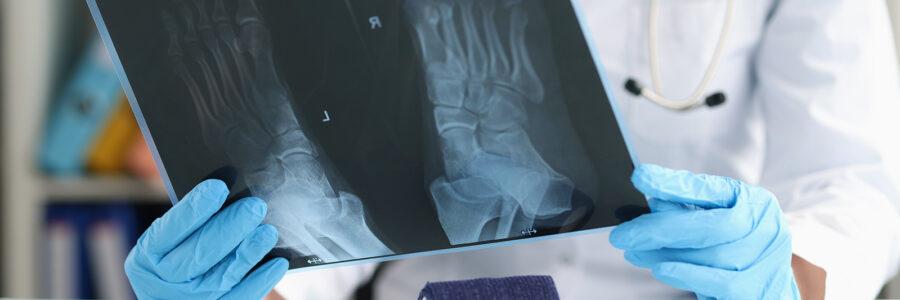
Stress Fractures & Massage Therapy
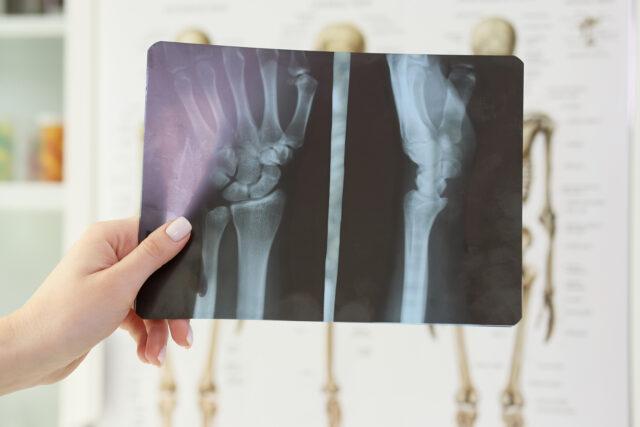 Introduction: In today’s fast-paced world, stress fractures have become increasingly common, affecting athletes, fitness enthusiasts, and even individuals with an active lifestyle. These tiny, hairline fractures in the bones can be painful and debilitating, often requiring substantial recovery time. While conventional treatments like rest, immobilization, and physical therapy play a crucial role in the healing process, incorporating massage therapy into the recovery plan can yield numerous benefits. In this blog post, we will delve into the world of massage therapy and explore how it can aid in the healing of stress fractures, offering much-needed relief and promoting overall well-being.
Introduction: In today’s fast-paced world, stress fractures have become increasingly common, affecting athletes, fitness enthusiasts, and even individuals with an active lifestyle. These tiny, hairline fractures in the bones can be painful and debilitating, often requiring substantial recovery time. While conventional treatments like rest, immobilization, and physical therapy play a crucial role in the healing process, incorporating massage therapy into the recovery plan can yield numerous benefits. In this blog post, we will delve into the world of massage therapy and explore how it can aid in the healing of stress fractures, offering much-needed relief and promoting overall well-being.
Understanding Stress Fractures: Before we dive into the benefits of massage therapy, let’s first gain a better understanding of stress fractures. Stress fractures typically occur due to repetitive strain or overload on a particular bone, leading to microdamage that surpasses the bone’s natural ability to repair itself. Common sites for stress fractures include the shins, feet, and hips. These fractures are often characterized by pain, swelling, tenderness, and sometimes even difficulty in bearing weight.
The Role of Massage Therapy in Stress Fracture Recovery: Massage therapy, when used as a complementary treatment alongside conventional approaches, can provide a range of benefits for individuals recovering from stress fractures. Let’s explore some of these benefits:
- Pain Relief: Massage therapy helps reduce pain associated with stress fractures by stimulating the release of endorphins, the body’s natural painkillers. The gentle manipulation of soft tissues and muscles also promotes relaxation and alleviates muscle tension, providing immediate relief.
- Improved Circulation: Massage techniques, such as effleurage and petrissage, increase blood flow to the affected area, delivering vital nutrients and oxygen to the injured tissues. Improved circulation aids in the removal of waste products and enhances the healing process.
- Reduced Inflammation and Swelling: Massage therapy helps to reduce inflammation by stimulating lymphatic circulation, which assists in the removal of excess fluid and toxins. By decreasing swelling, massage therapy can alleviate pressure on the injured bone, reducing discomfort and promoting faster healing.
- Increased Range of Motion and Flexibility: Immobilization during the healing process can lead to stiffness and reduced range of motion. Massage therapy incorporates stretching and joint mobilization techniques that target surrounding muscles, tendons, and ligaments. These techniques help restore flexibility, enhance joint mobility, and prevent secondary muscle imbalances.
- Stress Reduction: Dealing with a stress fracture can take a toll on an individual’s mental well-being. Massage therapy provides a nurturing and calming environment, promoting relaxation and reducing stress and anxiety levels. This holistic approach addresses both the physical and psychological aspects of recovery, aiding in the overall healing process.
- Accelerated Healing: By improving circulation, reducing inflammation, and promoting relaxation, massage therapy plays a significant role in expediting the healing of stress fractures. It helps optimize the body’s natural healing mechanisms and assists in the remodeling of bone tissues, facilitating a quicker return to normal activities.
- Prevention of Secondary Injuries: After the primary stress fracture has healed, massage therapy can continue to play a vital role in preventing secondary injuries. By addressing muscle imbalances, promoting proper alignment, and maintaining flexibility, massage therapy helps reduce the risk of reinjury and enhances overall musculoskeletal health.
Conclusion: Stress fractures can significantly impact an individual’s quality of life, hindering their ability to engage in physical activities and causing considerable pain and discomfort. Incorporating massage therapy into the recovery plan can provide a multitude of benefits, including pain relief, improved circulation, reduced inflammation, enhanced range of motion, stress reduction, accelerated healing, and prevention of secondary injuries. However, it’s essential to consult with a healthcare professional or licensed massage therapist to ensure that the massage techniques used are appropriate for the specific stage of the injury and the individual’s overall health condition. With its holistic approach, massage therapy can complement conventional treatments and contribute to a speedier and more effective recovery from stress fractures.

Lupus & Massage Therapy
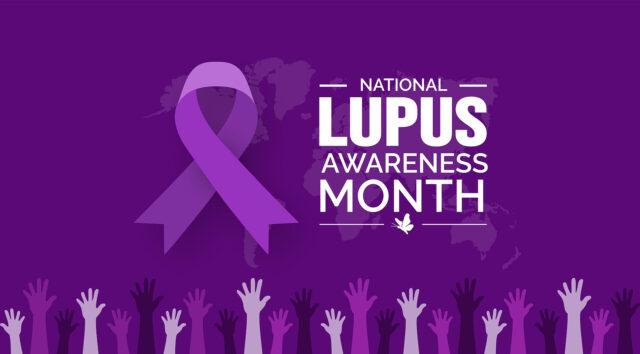 Lupus, also known as Systemic Lupus Erythematosus (SLE), is a chronic autoimmune disease that can affect various parts of the body, including the skin, joints, kidneys, heart, and lungs. The condition occurs when the immune system mistakenly attacks healthy tissues in the body, causing inflammation and damage.
Lupus, also known as Systemic Lupus Erythematosus (SLE), is a chronic autoimmune disease that can affect various parts of the body, including the skin, joints, kidneys, heart, and lungs. The condition occurs when the immune system mistakenly attacks healthy tissues in the body, causing inflammation and damage.
While the exact cause of Lupus is unknown, it is believed to be a combination of genetic, environmental, and hormonal factors. Women are more likely to develop the condition than men, and it often appears between the ages of 15 and 44.
The symptoms of Lupus can vary widely, depending on which part of the body is affected. Common symptoms include fatigue, joint pain and stiffness, skin rashes, fever, hair loss, and chest pain. In some cases, Lupus can lead to more serious complications, such as kidney failure, heart attacks, and stroke.
There is currently no cure for Lupus, but treatment options are available to manage symptoms and prevent complications. These may include medications such as anti-inflammatory drugs, corticosteroids, and immunosuppressants, as well as lifestyle changes such as getting regular exercise, eating a healthy diet, and avoiding triggers that can worsen symptoms.
Massage therapy is one complementary therapy that may help people with Lupus manage their symptoms and improve their overall quality of life. Here are some of the ways that massage therapy can benefit patients with Lupus:
- Reducing Pain and Stiffness: Massage therapy can help reduce muscle and joint pain and stiffness, which are common symptoms of Lupus. Massage can help increase blood flow to the affected areas, promote the release of endorphins (natural painkillers), and reduce inflammation.
- Promoting Relaxation and Stress Relief: Stress can worsen symptoms of Lupus, and many people with Lupus experience anxiety and depression as a result of their condition. Massage therapy can help promote relaxation and reduce stress, which may help improve overall mental health.
- Improving Sleep: Many people with Lupus struggle with sleep disturbances, including insomnia and restless sleep. Massage therapy can help promote relaxation and improve sleep quality, which may help reduce fatigue and improve overall well-being.
- Boosting the Immune System: Massage therapy has been shown to stimulate the immune system and increase the production of white blood cells, which are responsible for fighting off infections. This can be particularly beneficial for people with Lupus, whose immune systems are compromised.
- Providing a Safe and Nurturing Environment: Many people with chronic illnesses such as Lupus may feel isolated or disconnected from others. Massage therapy provides a safe and nurturing environment where patients can feel cared for and supported, which can have a positive impact on their overall mental and emotional well-being.
It is important to note that massage therapy should not be used as a substitute for medical treatment for Lupus. However, it can be a valuable complementary therapy that can help improve symptoms and overall quality of life for people with Lupus.
If you are considering massage therapy as a treatment option for Lupus, be sure to talk to your healthcare provider first. They can help you determine if massage therapy is a safe and appropriate option for you, and can also recommend qualified massage therapists who have experience working with patients with Lupus.
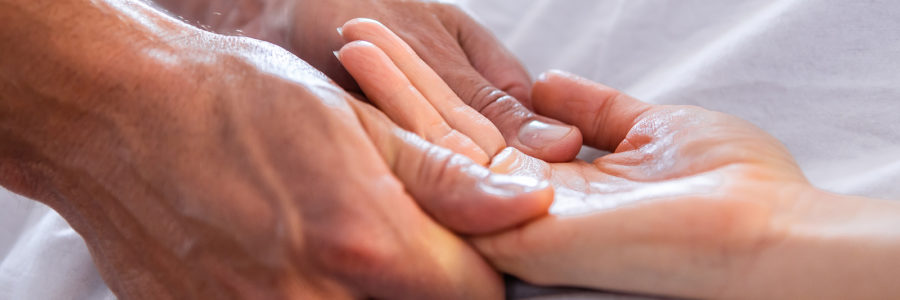
Massage & Carpal Tunnel
 Massage therapy is an effect treatment for carpal tunnel syndrome. Carpal tunnel syndrome is a condition caused by a pinched median nerve in the wrist. It’s associated with pain, tingling, numbness, or weakness in the hand and wrist. The carpal tunnel is a narrow canal in the wrist. The bottom and sides of the tunnel are formed by small bones called carpal bones. The top of the tunnel is a strong band of transverse carpal ligament, which holds the all components together.
Massage therapy is an effect treatment for carpal tunnel syndrome. Carpal tunnel syndrome is a condition caused by a pinched median nerve in the wrist. It’s associated with pain, tingling, numbness, or weakness in the hand and wrist. The carpal tunnel is a narrow canal in the wrist. The bottom and sides of the tunnel are formed by small bones called carpal bones. The top of the tunnel is a strong band of transverse carpal ligament, which holds the all components together.
Inside the tunnel are the median nerve and tendons. Tendons are rope-like structures that connect bones in the hand to muscles in the forearm. They also allow the thumb and fingers to bend. The median nerve runs down the arm and forearm and passes through the carpal tunnel into the palm of the hand. It provides sensation to the fingers (except the little finger). It also adds strength to some small muscles at the base of the thumb and index finger.
When the ligament thickens or tendons swell, the space in the tunnel decreases and the median nerve becomes compressed, exerting excessive pressure on the median nerve.
Symptoms of Carpal Tunnel Syndrome
Carpal tunnel syndrome symptoms include:
- Tingling, burning, or itching in the palm and fingers, especially the thumb, middle, and index fingers
- Occasional shock-like sensation that moves up into the fingers
- Pain and tingling traveling up the forearm toward the shoulder
- A swollen feeling in the fingers
- Decreased feeling in the fingertips
- Occasional hand weakness and loss of coordination
- Weakness and clumsiness in the hand, which may make it difficult to use the hand for small tasks such as writing, or buttoning a shirt
- Dropping objects due to numbness, weakness, or loss of proprioception
Symptoms of carpal tunnel syndrome begin suddenly or gradually- without a specific injury. In fact, many people find that symptoms come and go at first, and usually affected by excessive use of the hand. As the condition worsens and the pressure on the nerve becomes greater, symptoms may become more frequent or may persist for longer periods of time.
It’s common for people to experience nighttime symptoms because many sleep with their wrists bent. In the morning, a person may wake up with tingling or numbness in their hands. They may not notice the problem at all during the day, but symptoms often flare up when holding something with the wrist bent, such as when reading a book, using a phone, or driving. Many patients find that moving or shaking the hands can relieve the symptoms in the early stages of the condition.
Causes of Carpal Tunnel Syndrome
Carpal tunnel syndrome is often caused by a combination of factors that irritate or squeeze the median nerve. Possible contributing factors include:
- Activities that involve highly repetitive wrist or finger motions, like typing, farming, or knitting. Repetitive motions may aggravate the tendons in the wrist, causing swelling that exerts pressure on the nerve. This usually happens when the hands are lower than the wrists
- Trauma or injury to the wrist, such as sprain or fracture. This may break one or more of the carpal bones, cause swelling, or deform the small bones in the wrist
- Arthritis-related diseases, especially if there is swelling of the wrist joint, tendons, and tissues in the carpal tunnel
- Work that involves heavy use of the wrist
- Mechanical problems in the wrist joint
- Hormonal changes and fluid retention caused by pregnancy or menopause
- Repeated use of vibrating hand tools or instruments that require forceful gripping and put pressure at the base of the palm
- Heredity
- Health conditions such as diabetes, amyloidosis, kidney failure, lymphedema, menopause, an underactive thyroid gland, or an overactive pituitary gland
Massage Therapy for Carpal Tunnel Syndrome
Massage therapy is a non-invasive and effective treatment for carpal tunnel syndrome. It helps relieve the symptoms of carpal tunnel syndrome by reducing swelling in the muscles caused by damage or overextension in the work environment. It also works by breaking down scar tissue, and softening and lengthening muscles and fascia of the shoulder, neck, elbow, wrist, hand, forearm, and upper arm.
During a massage session, the therapist will use deep tissue work to stimulate trigger points, release adhesions, and reduce the tension in the soft tissues of the arm, shoulder, hand, and wrist. This involves bringing the arm and shoulder out of internal rotation or incorporating myofascial cupping to reduce muscle tension.
By massaging and stretching tendons in the arm and wrist, a massage therapist can help restore full flexibility of the arm and reduce the pressure the tendons are putting on the median nerve. This in turn reduces the inflammation, pain, and numbness associated with carpal tunnel syndrome.
The number of massage sessions it takes for a patient with carpal tunnel syndrome to find relief will vary depending on how severe the problem is. Most clients experience some level of relief after the first session but for others, it may take three to five sessions or more to get long-term results.
Learn Advanced Massage Therapy Techniques from the Experts
While massage therapy is effective in treating carpal tunnel syndrome, it must be done right to get the expected results. If you’d like to expand your knowledge and skills in massage therapy, enroll in one of Seattle’s best massage therapy schools to learn therapeutic massage therapy protocols. You’ll learn massage theories and practices, anatomy and physiology, pathology, kinesiology, and much more. This will equip you with the skills you’ll need to provide care for individuals who’ve been affected by carpal tunnel syndrome and other similar ailments.
Another option for massage therapy schools in Seattle is our sister school Seattle Clinical Massage School
Contact us today to speak with one of our enrollment specialists.
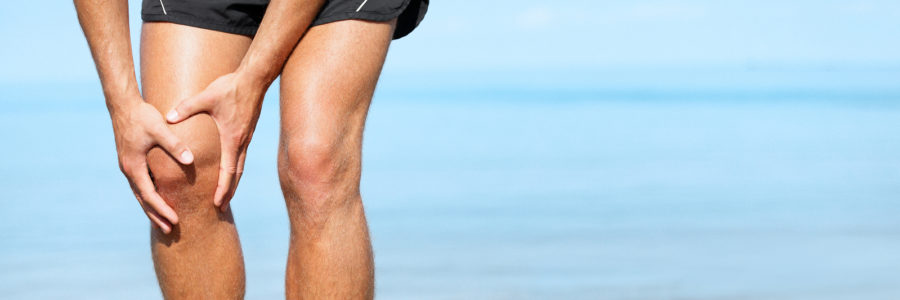
Anterior Cruciate Ligament Tears
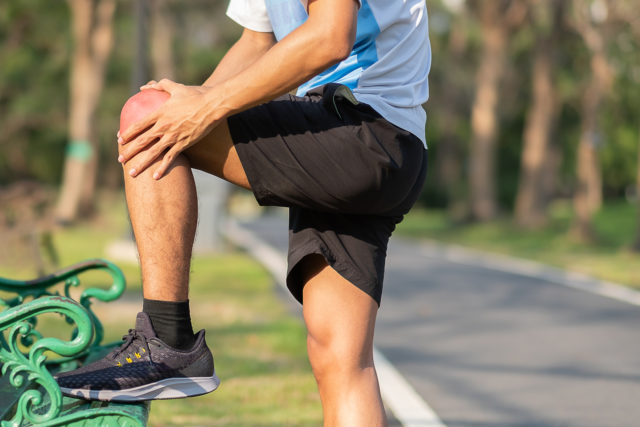 An Anterior Cruciate Ligament (ACL) tear is an injury impacting major ligaments in the knee. It is a key concern for many sports enthusiasts because such ACL tears occur mostly during sports activities that involve jumping, landing, sudden stops, or changes in direction.
An Anterior Cruciate Ligament (ACL) tear is an injury impacting major ligaments in the knee. It is a key concern for many sports enthusiasts because such ACL tears occur mostly during sports activities that involve jumping, landing, sudden stops, or changes in direction.
Examples of such sports include football, basketball, soccer, or downhill skiing. Also, these ruptures are more common in women than in men because of the difference in anatomy.
Once you sustain an ACL injury, you might require surgery, but that depends on factors like your activity level and severity of damage. With advancements in the field of reconstruction surgery, athletes can benefit from hamstring grafts, patellar tendon graft along with allografts. These prove effective in restoring both function and strength to the injured knee.
Even so, the ability of an athlete to go back to an active lifestyle successfully/full recovery after ACL reconstruction depends on the absence of three prevalent complications.
- Quadriceps weakness
- Flexion contracture (of the muscle group)
- Patellofemoral pain syndrome (PFPS)
Many physicians will use the patellofemoral pain syndrome as a “catch-all” diagnosis for the myriad of symptoms associated with anterior knee pain, especially after ACL reconstruction.
Signs and Symptoms of Anterior Cruciate Ligament Rupture
Once you sustain the injury, you will hear a popping sound from your knee. Other common symptoms include:
- Pain and swelling
- Loss of full range motion
- Discomfort when walking
- Joint tenderness
- Inability to bear leg weight even with minimal pain
- Feeling of instability
Causes
Several movements can cause an anterior cruciate ligament tear. These include:
- Slowing down during a run
- Incorrectly landing from a jump
- Rapidly changing direction
- Stopping suddenly
- Direct contact or collision like during a tackle
- When a knee is twisted or bent backward
While sport accidents are the most common causes of ACL injuries, you can sustain an ACL tear from missing a step in a staircase, falling off a ladder, or being in a car accident.
Risk factors
There are several risk factors for an ACL injury, and they include:
- Gender
- Active involvement in sports like football, gymnastics, basketball, soccer, and downhill skiing
- Using defective sport equipment like ski bindings
- Wearing ill-fitting sportswear
- Having a history of an ACL tear
Outcome and treatment
When you experience an ACL injury, you might not be able to walk correctly. An ACL injury causes a partial or complete tear of tissue and is usually very painful. Once you visit a doctor, they will recommend treatment based on the severity of the injury. Treatment options include first aid, medications, physical therapy, or surgery.
Massage Therapy for Anterior Cruciate Ligament Tear
One aspect of physical therapy for ACL is massage. Therapeutic massage therapy has the following benefits:
- Reduce pain and swelling (inflammation)
- Increase blood circulation and joint mobility
- Accelerate the healing process
- Lower the aggregation of scar tissue forming around the site of the injury
During a therapeutic massage, therapists target surrounding muscles, joints, or other specific structures to reduce strain. And once you’ve achieved success in ensuring they’re relaxed, a physician can then start restoring them to their proper alignment and flexibility.
Massage therapy is considered a safe and effective complementary treatment for many muscle and joint problems—including ACL. The type of massage and the number of sessions you will require will depend on your injury. At the end of all of your sessions, you will have regained full range of motion without any pain.
While massage therapy is effective in treating ACL, it must be done correctly for maximum results. Ensure you get your massage therapy from a professional therapist. If you would like to learn more about massage therapy or attend massage school, call us today. Also contact the Northwest Academy admissions department for any massage related questions.

Degenerative Disc Disease & Massage
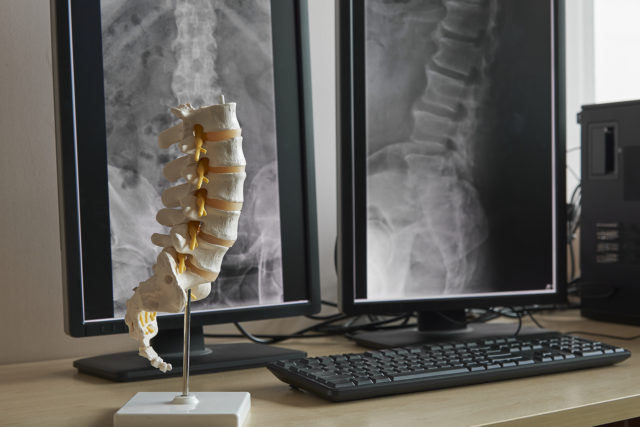
Degenerative disc disease (DDD) is a medical condition where one or more discs in the back lose strength. Despite the name, degenerative disc disease isn’t technically a disease but a progressive condition that worsens over time due to wear and tear, or injury.
The discs in your back are situated in between the vertebrae of the spine and act as cushions and shock absorbers. They help you stand up straight and move through everyday motions, such as bending over or twisting around. As people age, DDD can worsen and cause mild to extreme pain that can interfere with your everyday activities.
Symptoms of Degenerative Disc Disease
Some of the most common symptoms of degenerative disc disease include pain that:
- Primarily affects the lower back
- Could extend to legs and buttocks
- Stretches from neck to arms
- Can be worse from sitting
- Worsens after bending or twisting
- Comes and goes in a few days or extends to several months
People with DDD might exhibit less pain after walking or exercise. Additionally, DDD can cause weakened leg muscles and numbness in your arms or legs.
Causes of Degenerative Disc Disease
DDD is primarily caused by natural wear and tear of spinal discs. Over time, discs tend to dry out and lose their support and function, leading to pain and other symptoms. DDD can start developing in your 30s or 40s and progressively worsen as you age. However, the condition can also be caused by overuse from sports or repetitive activities, or injury. Once a disc is damaged, it can’t repair itself.
Risk Factors
Age is the major risk factor for degenerative disc disease. The discs in between the vertebrae often shrink down and lose their cushiony support as people age. Almost every adult above the age of 60 has some form of disc degeneration. However, not all cases cause pain.
Long-term repetitive activities that place a lot of pressure on certain discs can also increase your risk. Other risk factors include car accidents, overweight or obesity, and a sedentary lifestyle.
Diagnosis of DDD
An MRI can help detect degenerative disc disease. Your doctor may recommend this type of imaging test based on a physical exam or an investigation into your symptoms and health history. Imaging tests can reveal damaged discs and help rule out other triggers of pain. When you receive a diagnosis of DDD, it does not mean that you’re disabled or headed for a downward spiral of spinal degeneration. In fact, DDD is often a part of the natural aging process that we all go through at some point in life. And the good news is that you can mitigate the associated pain through a variety of treatment solutions, including massage therapy.
Massage Therapy Treatment for DDD
From a Massage Therapy point of view, the approach in treating DDD is to strike a balance between reducing muscle tension and enhancing traction (decompressing the targeted vertebral segments). Finding a “green zone” of treatment is critical since the spasms that occur through the neck or low back happen because the body is trying to protect that area. By applying slow, repetitive, methodical massage between soft tissue and joint mobilization (spinal decompression), massage therapy can help relieve pain and allow you to move easier and execute strengthening exercises efficiently.
Massage therapy generally helps in these three ways:
- Increasing Blood Flow and Circulation: Proper blood circulation ensures that critical nutrients flow back fully to the strained muscles and tissues. This makes the muscles/tissues stronger, helping relieve the strain coming from the degenerating discs.
- Decreasing Tension: The muscles can become tense as they struggle to compensate for the weakening discs. When these muscles are manipulated during the massage, they become relaxed, which improves the range of motion and flexibility.
- Increasing the “feel good” chemical: Massage therapy releases Endorphins, a mood-enhancing chemical that is released in the brain. This “feel good” chemical helps in reducing pain and enhancing recovery.
Prognosis Possibilities
Without treatment or therapy, DDD can gradually progress and cause more adverse symptoms. While surgery is a treatment option, other less invasive treatments such as massage therapy have been found to be just as helpful yet less costly. A clinical study involving a 66-year-old female patient with cervical degenerative disc disease in her lateral left facet joint recorded impressive outcomes. The patient was experiencing symptoms of severe neck pain accompanied by restricted cervical range of motion. She also exhibited radicular left shoulder and arm pain. The objective of the study was to determine the effect of therapeutic massage on the patient’s symptoms and impairments of cervical DDD.
After multiple treatment sessions, the patient’s symptoms had decreased and cervical ROM had moderately improved. There was also a reduction in reported pain and an improvement in functional daily activities. This is an indication that massage therapy is a favorable treatment intervention for DDD symptoms.
Bottom Line
Massage can help improve the symptoms associated with Degenerative Disc Disease for a prolonged duration of time as long as you continue to follow the maintenance schedule that your Massage Therapist lays out. Massage therapy typically reduces muscle strain, improves flexibility, and mitigates pain. However, you can achieve the best results by working in conjunction with other health care professionals. Keep open communication between your doctor and your massage therapist to ensure the best treatment.
To learn about becoming a massage therapist in Seattle contact one of the following local massage schools; Northwest Academy for the Healing Arts or Seattle Clinical Massage School
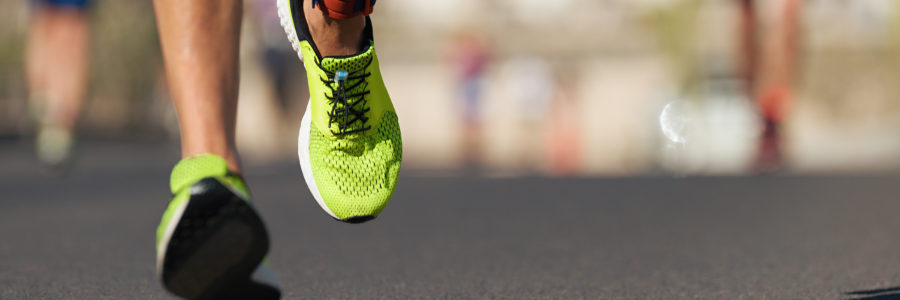
5 Tips to Starting a New Exercise Routine
 5 Tips to Starting a New Exercise Routine
5 Tips to Starting a New Exercise Routine
If you are in the health industry, you appreciate the value of maintaining a healthy lifestyle. Key among this is regular exercise. Regular spring exercises, in particular, ensure that the body remains motivated and fit for the season. There is no substitute for the feeling of being fit and in control. Even though the rewards are enviable, achieving them takes a lot of time, effort and patience – particularly during the early stages. Unfortunately, not everyone is blessed with these virtues. So, how do you poise yourself to have the best possible start to a new exercise routine?
The best way to go about it is to develop a plan that gets you moving gradually but surely. Remember that the body will experience unfamiliar and strenuous tensions and contractions. Therefore, it is important that the plan accommodates a recuperation procedure such as massage therapy. The following tips will ease you into your new exercise routine.
- Start from a low point and make gradual increments
A cautious start with slow progression will ensure that you do not over-strain the body leading to injury or excessive fatigue during spring exercises. Walking for several minutes is a great option to start and you can also incorporate it as part of your warm-up.
- Set uninterrupted timelines
You have to schedule your workout sessions to achieve maximum impact. Having regular timelines when you exercise creates a healthy loop that allows the body to recover and be ready for the next set of spring exercises. Failure to allocate a specific time will also leave you procrastinating – and we know how that ends.
- Have fun
Enjoying the exercise sessions ensures that your mind gets livened up and the workouts don’t feel like a chore. Ideally, join a group that encourages you or engage a personal trainer that optimizes your sessions. If you love music then select a playlist that you consider lively to keep you going.
- Eat healthily
It is great to accompany the exercises with a balanced diet. Start switching from junks to wholesome foods gradually. This will enable you to reach your objectives much quicker.
- Stay hydrated
Water should be available all through the time as you work out. You should hydrate frequently to replace the water your body will be losing through sweating.
Healthy living is a hot lifestyle trend. People are continually looking for ways to stay fit and healthy. Massage therapy is therefore a big opportunity – particularly in helping ease people into spring exercises. If you wish to incorporate additional training to your resume, massage therapy is the way to go. Not only is it fulfilling to help people achieve healthy living, it is also a marketable course that will boost your resume. At Northwest Academy will learn anatomy and physiology, kinesiology, massage theories and practices, pathology, first aid and CPR that will equip you to be a massage therapist. Contact us today for more details.
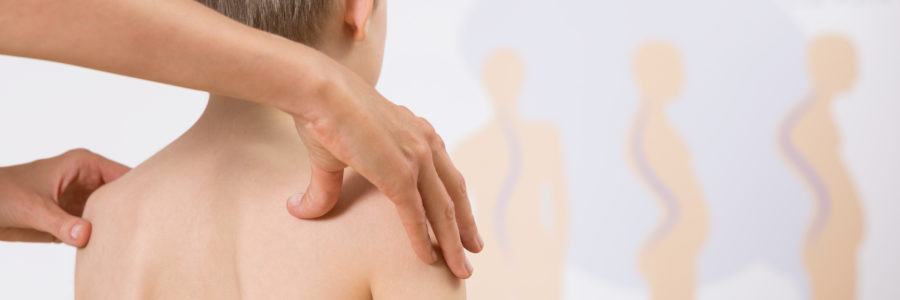
Pediatric Massage Therapy for Scoliosis
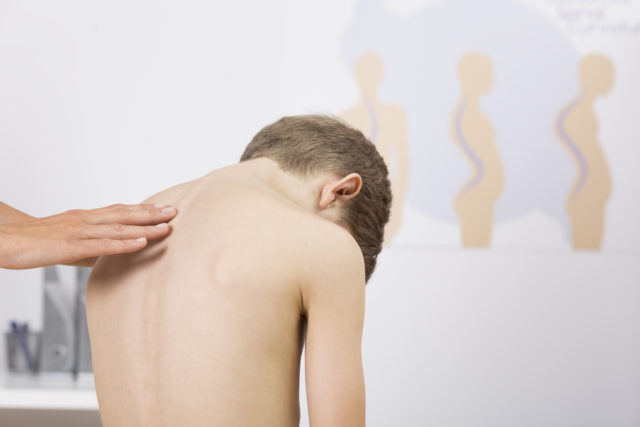
Scoliosis is a condition that millions of Americans are familiar with. You may have already worked with patients who suffer from pain, discomfort, and stiffness due to scoliosis. This condition is particularly detrimental to children, who may struggle with weak muscles, back pain, and fatigue from long periods of standing upright.
Luckily, massage therapy can be used to help treat scoliosis in children. A pediatric massage involves manipulating soft tissues with the aim of relieving tension and improving blood flow to affected regions. When done correctly, the symptoms of scoliosis in children can be significantly reduced.
Understanding Scoliosis in children
Scoliosis is a condition where the spinal cord curvature is increased more than usual. The spine typically has a mild curve as it runs across your back. However, patients with scoliosis have a spinal cord that resembles a C or an S shape.
Congenital scoliosis (in children) typically occurs during birth and affects children as they continue to grow. The severity of this condition will vary from one patient to another. Some spinal curvatures are barely noticeable, while others can even cause a deformity in the spine.
Some risk factors of scoliosis include birth defects, infections, cerebral palsy, or genetic disorders such as Down Syndrome. Adding pediatric massage therapy skills to your current knowledge base will help you provide adequate relief to scoliosis patients.
Symptoms of Scoliosis
Scoliosis in children manifests itself in many different ways. It can begin to develop in the womb due to the incorrect division of vertebrae, or vertebrae that don’t fully grow during early stages. Diagnosis may be done soon after birth- or even later on when the child is 10-15 years old.
Some of the most common symptoms include:
Chronic back pain
An incorrectly tilted spine and pelvis
Fatigue from standing upright
Uneven shoulders
Benefits of Massage therapy
Pediatric massage therapy is a useful technique that can treat scoliosis in children. For example, effleurage massage techniques target the soft tissues and warm them up for adjustment. Through repeated strokes along the length of a child’s spinal cord, the muscles can relax and ease pain, stiffness, or tension.
Massage therapy also uses a combination of lubricants to soften the muscles and increase blood circulation to affected areas. Children with scoliosis can enjoy significant relief from symptoms and live a healthy life with timely massage therapy sessions.
Massage therapy techniques you can learn in massage school
If you wish to advance your knowledge and skills in massage therapy for scoliosis, attending massage school is an excellent way to get started. With these advanced skills under your belt, you’ll be able to provide timely pediatric massage therapy to children who’ve been affected by this condition.





